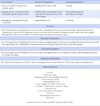Abstract
Purpose
This study was to use Parse's research method to discover the structure of the lived experience of sufferings of women who have attempted suicide.
Methods
This study was a qualitative research based on Parse's research method. Participants were 7 women who had attempted suicide and who were hospitalized in a Mental Hospital and in the Suicide-Prevention Center of G City. Data were collected by dialogical engagement between participants and the researcher from November, 2011 to February, 2013, and were analyzed through the extraction-synthesis and heuristic interpretation processes.
Results
Through the analyses, the structure was identified; The lived experience of suffering of women who have attempted suicide is the process that they ultimately found new meaning and value of life by speaking out their concealed pain through the intimate human contact with other people, although the women once decided to commit suicide to escape from extreme agony.
References
1. Gadamer HG.
BH Gong
. Schmerz-Einschätzungen aus medizinischer, philosophischer und therapeutischer Sicht. Seoul: Chulhak & Hyunsilsa;2005. p. 105.
2. Pilkington FB, Kilpatrick D. The lived experience of suffering: a Parse research method study. Nurs Sci Q. 2008; 21(3):228–237.

3. Winnicott D. Deprivation and delinquency.
JH Lee
. Seoul: Korean Psychotherapy Research Institute;2001. p. 396.
4. Korean Statistical Office. Cause of death statistics result [Internet]. Seoul: Korean Statistical Information Service;2011. 03. 26. cited 2014 Mar 28. Available from: http://www.kostat.go.kr/.
5. Motz A. Self-harm as a sign of hope. Psychoanal Psychother. 2010; 24(2):81–92. http://dx.doi.org/10.1080/02668731003707527.

6. Kim YT, Kim IS, Ju YS, Lee JY. A study on the status of female suicide and policy agenda. Seoul: Korean Women's Development Institute;2009. p. 222.
7. Kong BH. Das verstehen des schmertes in einem klinischen bereich. J Human Stud. 2005; 8:242–259.
8. Kahng SK. Does depression predit suicide? Gender and age difference in the relationship. Korean J Soc Welf Stud. 2010; 41(2):67–99.
9. Mo JH, Bae JH. Factors affecting suicidal behavior: focused on comparison gender and age difference. Health Soc Welf Rev. 2011; 31(2):121–145.

10. Kaslow NJ, Jacobs CH, Young SL, Cook S. Suicidal behavior among low-income African American woman: a comparison of first-time and repeat suicide attempters. J Black Psychol. 2006; 32(3):349–365.

11. Han JH. A study on cause of women depression related to suicide: focusing on women in 20's. [Seoul]: Sungshin Women's University;2010. [master's thesis].
12. Dougherty PA. Lived experience: near-fatal adolescent suicide attempt. [Florida]: University of South Florida;2010. p. 165. [dissertation].
13. Tzeng WC. After a suicide attempt in Taiwan: an ethnographic study. [San Francisco]: University of California;2002. 175. [dissertation].
14. Ko MH, Lee MO, Yi MS. A phenomenological study on live experience of sufferings in suicide attempters. J Korean Acad Psychiatr Ment Health Nurs. 2013; 22(4):339–348. http://dx.doi.org/10.12934/jkpmhn.2013.22.4.339.

15. Kong BH. Nursing practice and caring attitude from the aspect of virtue ethics. J Pan-Korean Philos Soc. 2004; 34:83–108.
16. Parse RR.
OJ Lee
JS Lee
MS Go
CH No
. The human becoming school of thought. 2nd ed. Seoul: Hyunmoonsa;2002. p. 170.
17. Parse RR. The human becoming modes of inquiry: emerging sciencing. Nurs Sci Q. 2005; 18(4):297–300. http://dx.doi.org/10.1177/0894318405380394.

18. Parse RR. The human becoming modes of inquiry: refinements. Nurs Sci Q. 2011; 24(1):11–15. http://dx.doi.org/10.1177/0894318410389066.
19. Ryh SH. Love of one-eyed fish. Seoul: Yolimwon;1996. p. 110.
20. Padget DK.
TG Yu
. Qualitative methods in social work research. Paju: Nanam;2001. p. 280.
21. Lesniak RG. The lived experience of adolescent females who self-injure by cutting. Adv Emerg Nurs J. 2010; 32(2):137–147. http://dx.doi.org/10.1097/TME.0b013e3181da3f2f.

22. Quinnett PG.
HS Lee
SP Yuk
. Suicide: the forever decision. Seoul: Hakjisa;2006. p. 246.
23. Parse RR. Illuminations: the human becoming theory in practice and research.
OJ Lee
JS Lee
MS Go
CH No
. Seoul: Hyunmoonsa;2000. p. 321.

26. Parse RR.
OJ Lee
JS Lee
MS Go
. Community: a human becoming perspective. Seoul: Hyunmoonsa;c2007. p. 222.
27. Joiner T.
LW Ji
. Myths about suicide. Seoul: Basicbooks;c2011. p. 414.
28. Cooper J, Kapur N, Webb R. Suicide after deliberate self-harm: a 4-year cohort study. Am J Psychiatry. 2005; 162(2):297–303.

29. Mann JJ, Apter A, Bertolote J. Suicide prevention strategies: a systemic review. JAMA. 2005; 294(16):2064–2074.




 PDF
PDF ePub
ePub Citation
Citation Print
Print



 XML Download
XML Download